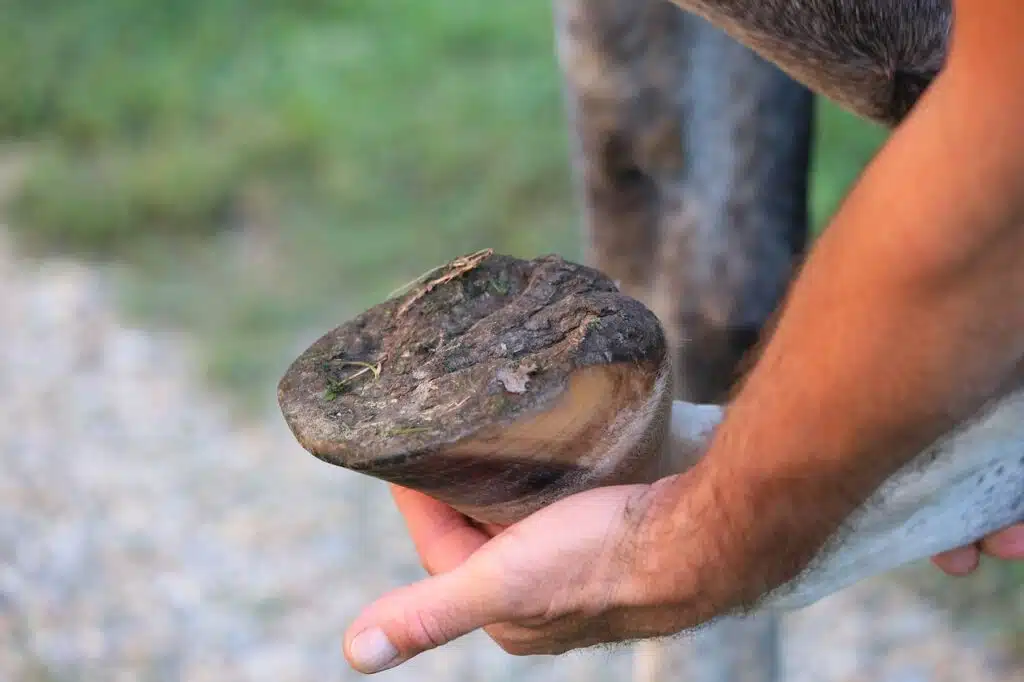
Introduction
Hoof health is a vital aspect of equine care, as the saying goes, “no hoof, no horse.” A horse’s hooves are not only the foundation of their body but also a reflection of their overall well-being. Just like any other living organism, horses can face various health issues, and their hooves are no exception. In this article, we will explore some of the most common hoof problems that can affect equine hooves. From cracks to abscesses, laminitis to thrush, and navicular syndrome, we will delve into the causes, symptoms, diagnosis, treatment, and prevention of these problems. So, saddle up and let’s dive into the world of hoof care.
Hoof Cracks, Splits and Chips
Hoof cracks, splits and chips are common hoof problems that can affect horses of any breed or discipline. They are defects in the hoof wall that can vary in size, location, depth and severity. They can be caused by various factors, such as trauma, nutrition, environment, genetics, conformation, hoof balance and disease. Some hoof cracks are harmless and cosmetic, while others can cause pain, lameness, infection and structural damage. Depending on the type and cause of the hoof crack, different treatments may be required, such as trimming, shoeing, filling, stabilizing or poulticing. The best way to prevent hoof cracks is to provide proper hoof care, nutrition and management for your horse
Hoof Thrush
Thrush is a bacterial infection that affects the frog of the hoof. It often occurs in damp and dirty environments and is characterized by a foul odor and black, crumbly discharge. Prevention includes maintaining a clean and dry living environment and regular hoof cleaning. If left untreated, thrush can lead to lameness and more severe complications.
Abscesses
Hoof abscesses can be excruciating for horses and can result from foreign objects or bacteria entering the hoof. They typically cause sudden lameness and intense pain. Prompt diagnosis and treatment, including poultices and proper drainage, are crucial to relieve discomfort and prevent complications.
Hoof Bruising
Equine hoof bruises can limit a horse’s mobility and function, not to mention their happiness level. It can be an unnerving sight when a horse comes up lame – even from such a simple thing as a bruise.
Laminitis
Laminitis, also known as founder, is a severe and painful condition where the hoof’s laminae become inflamed. It can be triggered by various factors, such as overeating, obesity, or metabolic issues. Early detection and immediate intervention are vital in managing laminitis to prevent permanent damage to the hooves.
Navicular Syndrome
Navicular syndrome is a chronic condition that affects the navicular bone and associated structures in the horse’s hoof. It can lead to chronic lameness if not managed appropriately. Diagnosis often involves X-rays, and treatment may include corrective shoeing and anti-inflammatory medications.
White Line Disease
White Line Disease, also known as seedy toe, is a serious condition affecting horses’ hooves. It targets the inner layer of the hoof wall, particularly the area known as the white line. The disease is characterized by the deterioration and detachment of the hoof wall due to fungal and bacterial invasion.
Prevention
Preventing hoof problems is always preferable to dealing with them after they occur. Regular hoof care, including proper trimming and shoeing, plays a significant role. Providing a clean and dry living environment is equally important. Proper nutrition, maintaining a healthy weight, and avoiding overfeeding are essential to prevent metabolic issues that can lead to hoof problems. Additionally, early detection through regular hoof inspections can make a significant difference in addressing issues promptly.
Conclusion
A horse’s hoof health is not something to be taken lightly. It directly impacts their overall well-being and ability to perform. By understanding the common hoof problems and their causes, symptoms, diagnosis, treatment, and prevention, you can be better equipped to care for your equine companion. Remember that working closely with a skilled farrier and veterinarian is essential in ensuring your horse’s hooves remain in excellent condition. So, put your best hoof forward in horse care, and you’ll enjoy many happy and healthy rides in the future.
